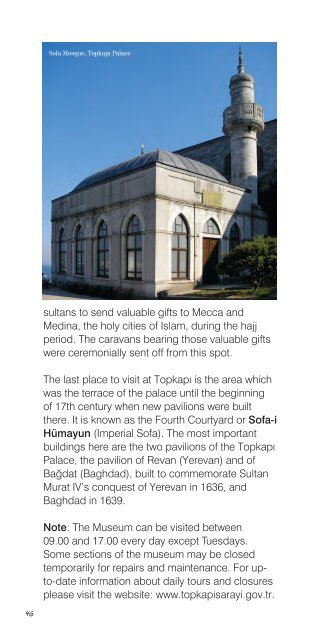istanbul - C2C
istanbul - C2C
istanbul - C2C
Create successful ePaper yourself
Turn your PDF publications into a flip-book with our unique Google optimized e-Paper software.
<strong>istanbul</strong><br />
where small fish swim, and the wooden platforms<br />
built just above the water level, lead the visitors<br />
to the most attractive feature of the cistern – the<br />
head of Medusa, which is rumoured to turn the<br />
unwary gazer into stone if directly looked at in the<br />
eye. The medusa heads were used as the base<br />
of columns, and it was believed that they were<br />
brought here to protect the city from evil. That was<br />
why they were placed upside down or sideways.<br />
You may be reluctant to leave behind the cool and<br />
refreshing air of the cistern; but there is more to<br />
see above ground. First is the Haseki Hürrem<br />
Hammam, the public bathhouse commissioned<br />
by Sultan Süleyman the Magnificent for his love,<br />
Hürrem Sultan (Roxelana). Built by Mimar Sinan,<br />
this bathhouse is situated between Ayasofya<br />
and Sultan Ahmet Mosque. Hürrem Sultan<br />
was brought to the palace to be trained as a<br />
concubine in the harem (the sacrosanct female<br />
quarters of the royal household). She managed to<br />
attract the attention of Sultan Süleyman with her<br />
smartness and beauty in quite a short space of<br />
time. Hürrem Sultan commissioned many public<br />
works bearing her name, and so takes her place<br />
of glory in Ottoman history. Her tomb is next to the<br />
tomb of Sultan Süleyman the Magnificent in the<br />
courtyard of Süleymaniye Mosque, considered as<br />
one of the city’s most treasured buildings.<br />
23



